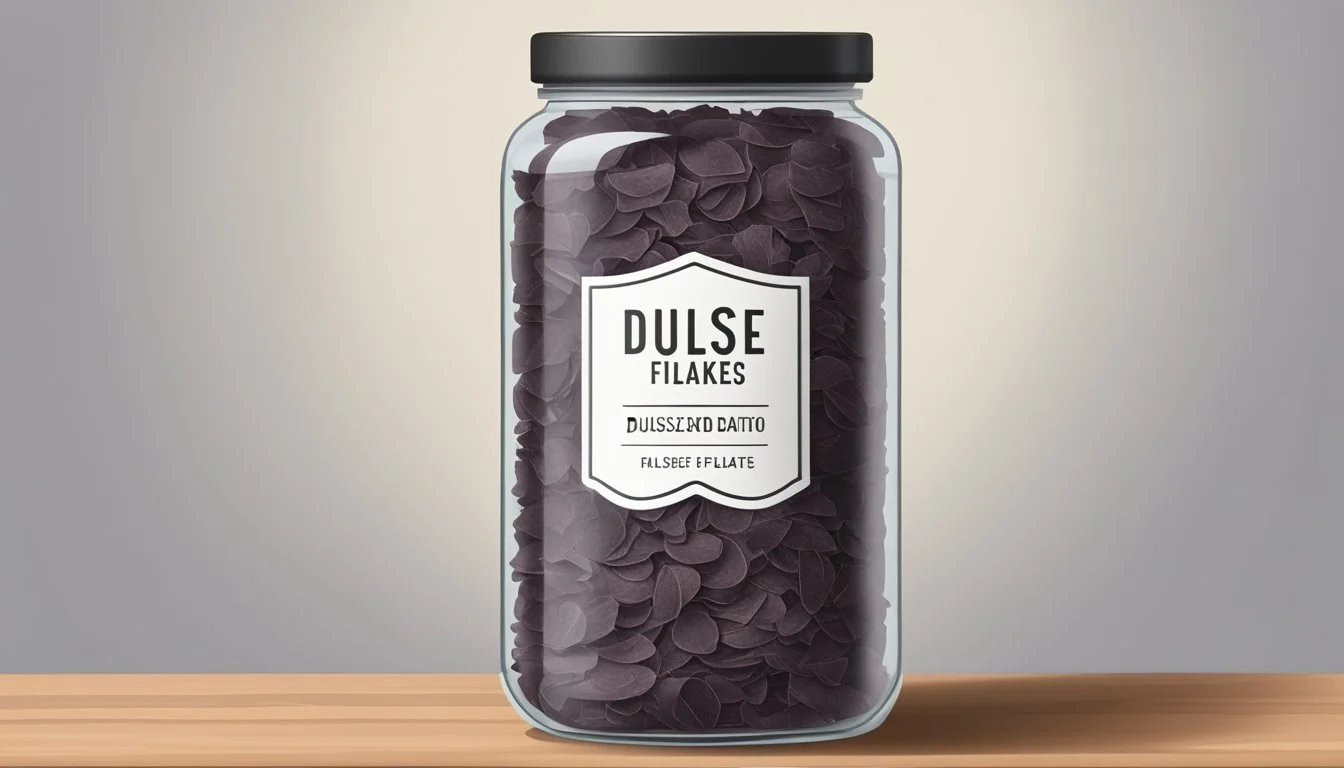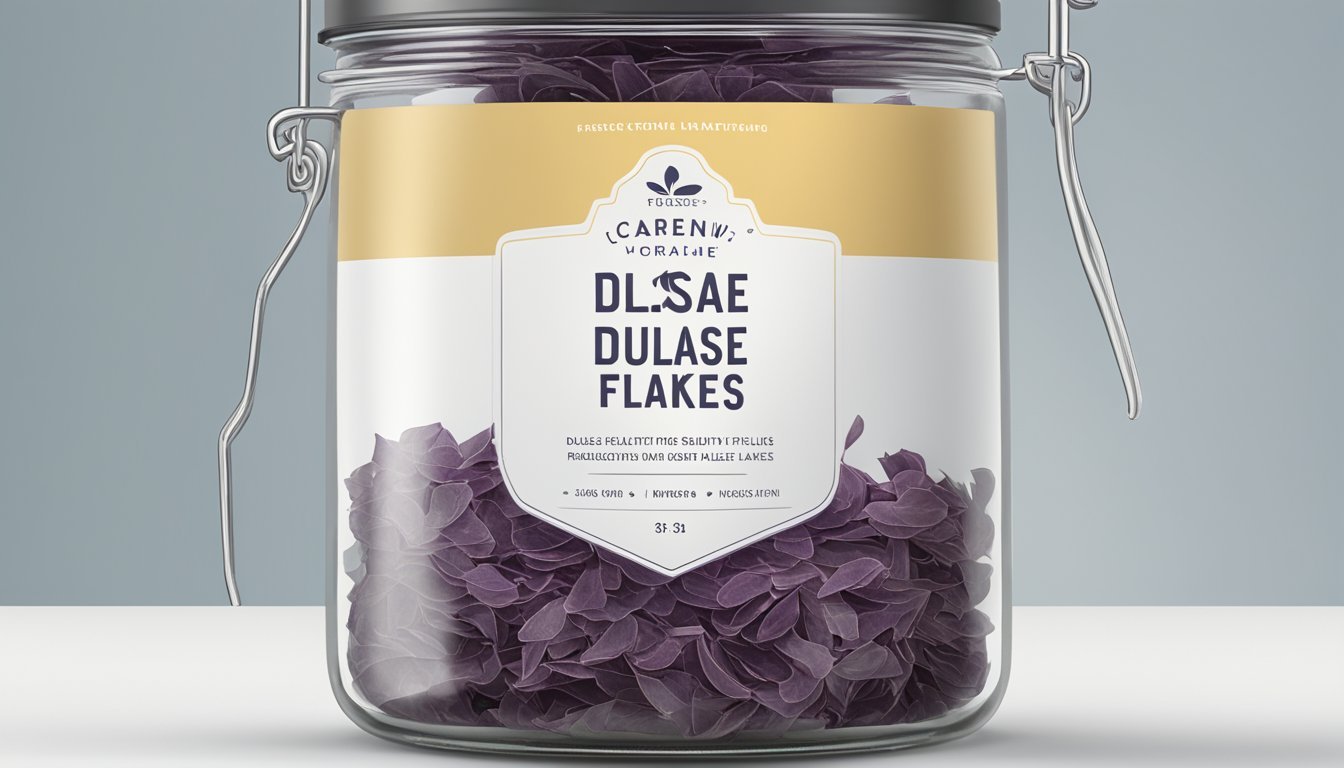How Long Do Dulse Flakes Last?
Understanding Shelf Life and Storage Tips
Dulse flakes, derived from the red algae commonly found in the northern coasts of the Atlantic and Pacific Oceans, offer a convenient way to incorporate the nutritional benefits of seaweed into a daily diet. As a shelf-stable product, they are valued not only for their rich flavor, often compared to bacon when cooked, but also for their practicality in storage and longevity. They bring a unique taste to a variety of dishes, from soups to salads, and are a sought-after ingredient for those looking to add a touch of oceanic flair to their meals.
The shelf life of dulse flakes is a concern for consumers and culinary professionals alike, as the preservation of their quality and nutrients is paramount. Typically, when stored correctly in a cool, dry place, and in a properly sealed container, dulse flakes can remain in good condition for up to two years. It is important to note that proper storage conditions are critical to maintain their color, texture, and taste, as well as to prevent spoilage due to moisture or other environmental factors.
The presence of natural preservatives like antioxidants within dulse contributes to its durability. Also, its low moisture content when dried inhibits bacterial growth, which could otherwise compromise its longevity and safety. Regular checks for any changes in smell, appearance, or flavor can help ensure that the dulse flakes are still of good quality and safe to consume within the expected shelf life.
What Is Dulse?
Dulse is a nutritious seaweed that holds culinary versatility and a rich history in various coastal cuisines. This section explores the biological nature of dulse, its specific characteristics, and its application in food culture.
Understanding Algae and Seaweed
Algae encompass a broad spectrum of aquatic organisms capable of photosynthesis. Seaweeds like dulse (Palmaria palmata) belong to this diverse group and thrive in marine environments. They are primarily classified into three categories based on pigment and structure:
Green Algae (Chlorophyta)
Brown Algae (Phaeophyceae)
Red Algae (Rhodophyta), which includes dulse.
Palmaria Palmata Specifics
Palmaria palmata, commonly known as dulse, is a red seaweed found clinging to the surfaces of rocks. Its habitat spans the cold waters of both the Atlantic and Pacific Oceans, particularly near Ireland, Canada, and Iceland. Dulse distinguishes itself with:
Color: Ranges from deep red to purple
Shape: Comprises soft fronds often resembling leaves
Dulse in Traditional and Contemporary Cuisines
Dulse has been integrated into local diets for centuries, especially in regions like Ireland where it's been harvested as a traditional food source. Contemporary cuisines now incorporate dulse flakes as a seasoning due to their:
Flavor: Often compared to the savory quality of bacon when cooked
Applications: Can be eaten raw or used in cooking, from sandwiches to salad dressings
Nutritional Profile of Dulse
Dulse is a seaweed known for its rich nutrient content, including essential minerals, vitamins, and dietary fibers. It is also a source of unique bioactive compounds.
Minerals and Vitamins in Dulse
Dulse seaweed is an excellent source of iodine, a crucial mineral for thyroid function. It also contains potassium, which is important for heart health, and iron, necessary for transporting oxygen in the blood. The seaweed offers calcium for bone health, and magnesium, which supports numerous biochemical reactions. With respect to vitamins, dulse provides vitamin C, involved in repair and growth of tissues, and significant levels of vitamin A, beneficial for the immune system and eye health.
Protein and Fiber Content
For a sea vegetable, dulse is notably high in protein, with about 4 grams per serving. It also delivers a substantial amount of dietary fiber, around 4 grams per serving, which is important for digestive health.
Unique Compounds in Dulse
Dulse contains various antioxidants, including phycobiliproteins and chlorophyll, which may guard against oxidative stress. Additionally, the presence of eicosapentaenoic acid (EPA), a beneficial omega-3 fatty acid, and a balanced omega-3 to omega-6 ratio supports overall cardiovascular health.
Health Benefits of Dulse
Dulse, a nutrient-rich seaweed, boasts an array of health benefits due to its high mineral and vitamin content. It plays a vital role in supporting cardiovascular health, thyroid function, offers anti-inflammatory properties, and promotes bone health and improved vision.
Cardiovascular Health
Dulse contributes positively to cardiovascular health. It contains elements that can help reduce blood pressure, a risk factor for heart attacks and strokes. Moreover, certain constituents in dulse may aid in lowering cholesterol levels, further protecting against atherosclerosis and coronary heart disease.
Thyroid Function
The iodine found in dulse is crucial for producing thyroid hormones, which are essential for a healthy metabolism. Iodine deficiency can lead to thyroid problems, but incorporating dulse into one's diet can provide a natural source of this vital trace element, supporting overall thyroid health.
Anti-Inflammatory Properties
This seaweed is known for its anti-inflammatory properties, largely due to its antioxidant content. The presence of these antioxidants may help reduce inflammation in the body, potentially lowering the risk of chronic diseases associated with it.
Bone Health and Vision
Dulse contains a variety of vitamins and minerals that are beneficial for bone health, possibly helping in the prevention of osteoporosis. In addition to its bone-strengthening potential, dulse's vitamin content also plays a role in maintaining good vision, an important aspect of overall health.
Culinary Uses of Dulse
Dulse, a versatile seaweed, is embraced in various culinary applications due to its unique flavor and ability to substitute for bacon, enhance meals, and season snack foods.
Dulse as a Bacon Alternative
Dulse is often praised for its smoky flavor when pan-fried, making it a suitable vegetarian substitute for bacon. Chefs leverage its crunchy texture and savory taste to enrich dishes usually requiring bacon, such as sandwiches and salads.
Sandwiches: When crisped in a pan, dulse can be used as a bacon substitute in BLTs or breakfast sandwiches.
Salads: It adds a bacon-like dimension to green or grain-based salads without the meat.
Incorporating Dulse into Meals
Dulse can be effortlessly incorporated into a multitude of dishes, ranging from soups to pizza, (What wine goes well with pizza?) due to its deep umami character.
Soups: Adding chopped dulse elevates the savory notes of chowders and broths.
Meat Dishes: Use dulse flakes as an accent in seasonings for marinades or rubs to enhance the depth of flavor.
Salad Dressings: Dulse, either in powdered form or finely chopped, can be whisked into vinaigrettes or creamy dressings for an oceanic twist.
Pizza Dough: Incorporating finely minced dulse into pizza dough imparts an unexpected savory note to homemade pizzas.
Dulse in Snack Foods
The adaptability of dulse extends to snack foods, where it serves as both a flavor enhancer and a nutritional boost.
Popcorn: Sprinkle dulse flakes atop popcorn for a nutrient-rich, flavor-packed snack.
Smoothies: Blend dulse into smoothies for a mineral-rich addition that complements sweet fruit flavors.
Salsa: Finely diced dulse can be mixed into salsas for an extra layer of complexity.
Preservation and Shelf Life of Dulse
The preservation of dulse, particularly in its dried and flaked forms, is crucial for maintaining its quality and nutritional value. Proper storage extends the shelf life significantly, ensuring that it remains safe for consumption over time.
Storing Dried and Flaked Dulse
Dried dulse, including dulse flakes, should be stored in an airtight container to protect it from moisture and air, two factors that can degrade its quality. A dry, cool place is ideal, away from direct sunlight. When stored correctly, dried dulse has a long shelf life of up to two years.
Factors Affecting Dulse Shelf Life
Several factors influence the shelf life of dulse:
Moisture: Exposure to moisture can lead to spoilage.
Temperature: High temperatures can accelerate degradation.
Light: Direct sunlight can reduce the nutritional quality.
Packaging: Proper packaging is essential to prevent contamination and extend shelf life.
Safe Consumption and Side Effects
While dulse is generally safe for consumption, its quality over time is a consideration. Always check for any signs of spoilage such as an unusual odor, discoloration, or mold. Whole-leaf dulse and flaked dulse have different textures, which can affect the visual cues for spoilage. Side effects from consuming spoiled dulse can include gastrointestinal discomfort. Always follow the "best before" date when provided and use sensory cues to gauge freshness.
Sustainability and Environmental Impact of Dulse Harvesting
Dulse harvesting has significant implications for sustainability and environmental impact, particularly in regions such as the northeastern United States and Oregon. This section examines the harvesting practices to understand how they align with ecological preservation and resource management.
Harvesting Practices
Harvesting dulse, a red macroalga scientifically known as Palmaria palmata, can be conducted sustainably to minimize its environmental footprint. In the intertidal zone of the Northeastern United States and along the Oregon coastline, sustainable practices include:
Hand-picking: This method ensures selective harvesting, which maintains the ecosystem's integrity and allows for natural regrowth.
Regulated harvesting seasons: By complying with localized guidelines, harvesters can prevent overexploitation during vulnerable growth periods.
Oregon State University's research on dulse aquaculture points towards integrated systems that demonstrate environmental sustainability. These systems typically involve low trophic-level species, are minimally disruptive to existing ecosystems, and employ semi-closed culture techniques that can reduce the ecological impact.
The information presented indicates a keen understanding of the importance of balancing ecological health with commercial harvesting goals. As such, dulse cultivation and wild harvesting is executed with careful consideration of environmental consequences, highlighting the role of conscientious practices in the sustainability of marine resources.
Emerging Research and Future Prospects
As the interest in dulse, a nutritional sea vegetable, continues to grow, emerging research and prospective advancements in health and culinary uses take center stage.
Health Research on Dulse
Researchers are increasingly focusing on dulse for its potential health benefits, particularly its nutritional value and content of dietary fiber, which can contribute to metabolic health. Dulse contains several vital nutrients and has shown promise for reducing inflammation and combating chronic diseases. Scientific research is also investigating dulse's high levels of antioxidants, which may help prevent cataracts and macular degeneration. Furthermore, studies on specific compounds in dulse like EPA (eicosapentaenoic acid) explore their role in maintaining heart health and preventing kidney problems.
Culinary Innovation
In the culinary realm, chefs and food scientists are harnessing the unique flavor profile of dulse to create innovative recipes. Dulse's bacon-like taste opens up new avenues for plant-based diet options, allowing for nutritional enhancements without compromising on flavor. The possibility of using dulse as a natural flavor enhancer in a range of dishes is an exciting prospect for future culinary innovation.
By melding these findings with the current health trends, dulse is set to become an important component of modern diets, coupling its rich nutrient profile with emerging uses in the food industry.









